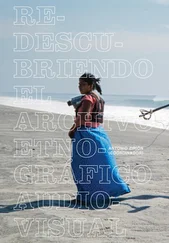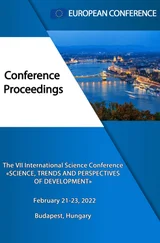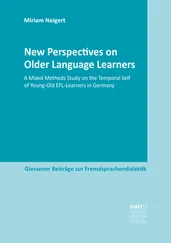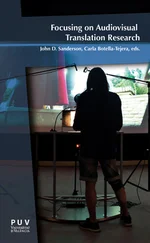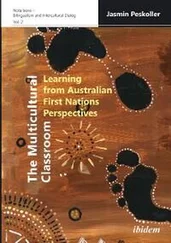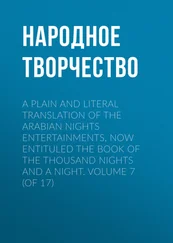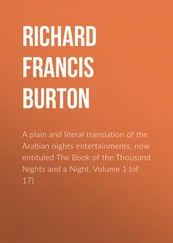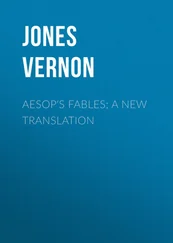More precisely, this book is divided into eight additional chapters following the present one. As introduced, each of them deals with the subject of audiovisual translation from an academic, educational or professional perspective. As diverse as their approaches may be, all the young authors who have collaborated to create this volume offer enriching perspectives that reflect the potential that AVT still has today and the prospective studies that are worth undertaking to continue enriching the AVT landscape.
After this initial overview of the current state of AVT, the second chapter is Audiovisual Translation Migrates to the Cloud: Industry, Technology and Education , written by Alejandro Bolaños García-Escribano. These pages offer an examination of the current state of Cloud technologies in AVT, a still-developing trend in the AVT professional landscape that could optimise current practices considerably. Not only does this chapter deal with the industry implications of this cutting-edge technology, but it also advocates for the introduction of Cloud-based toolkits in the AVT classroom in order to meet the demand for tech-savvy, well-trained language professionals.
The third chapter of the book is entitled Audiovisual Translation for Inclusive Language Education: The Case of the EOI Centres of the Valencian Community by Beatriz Reverter Oliver. The study described here explores the applications of AVT for sensory-disabled students in foreign language (FL) classrooms. The author analyses possible uses of AVT to adapt teaching materials for sensory-disabled students. Then, a theoretical review of the main studies on AVT and FL teaching is conducted – which are converging areas as demonstrated by current projects such as PluriTAV, developed at the Universitat de València. Finally, the results of a study carried out in order to explore the current role of AVT in an inclusive FL classroom – with special emphasis on subtitling for the deaf and the hard-of-hearing and audio description – are presented.
The fourth chapter of the book is Trans* Representations and Translations: Two Pictures, Two Spaces, Two Moments , written by Iván Villanueva Jordán and Antonio Jesús Martínez Pleguezuelos. Here, the authors address the representation of trans* subjects in two audiovisual products, each one establishing specific cases of gender, race and class in different temporal and spatial contexts: the documentary Paris Is Burning (Jennie Livingston, 1990) and the short film Loxoro (Claudia Llosa, 2011). Subsequently, two translation analyses are performed in order to observe what changes may or may not have occurred in both discourses, paying special attention to the use of language for expressing specific gender and sexual identities outside the traditional binary structure and their reflection in subtitling.
The fifth chapter of the book, written by Yeray García Celades, is entitled May the Intertextuality Be with You. The Translation of Star Wars Comics . These pages offer a study on intertextuality and translation. The author discusses the concept of intertextuality (a textual property that arises when a text refers to other texts) and its importance in the translation of derived products. Then, the Star Wars saga is introduced in the study, focusing on how intertextuality (references, quotes, character names and more) has been preserved in the translation of the current line of comics from this popular franchise and what translation techniques have been employed to do so.
Approaching the Concept of Localisation and its Place in Translation Studies is the sixth chapter of the book, written by Arturo Vázquez Rodríguez. The author takes a close analytical look at localisation , a current term that is widespread in both the translation industry and academia, but which lacks a unique, unanimous definition. Here, the author performs a theoretical review of some of the attempts at defining the concept, distinguishing and grouping different theoretical approaches toward localisation. Furthermore, the relationship and similarities of the concepts of localisation and translation are discussed, as well as localisation’s place in the AVT and translation studies landscapes.
The seventh chapter of the book, written by Rafaella Athanasiadi, is entitled Technology as a Driving Force in Subtitling . Here, the author performs a historical review of the relationship between subtitling and technology, starting with the birth of sound films and television, continuing with the arrival and impact of home video (particularly DVD) and digital television, and finally moving to the current audiovisual landscape in the form of video-on-demand platforms. Moreover, current working processes and software are explored and future subtitling trends in the form of translation memories and machine tanslation post-editing, among others, are also discussed.
The eighth chapter of the book, written by María López Rubio and Valentí Martí Sansaloni, is Media Accessibility Services at the Valencian regional TV Station À Punt Mèdia. A Professional Overview . As the title itself states, this chapter presents a professional overview of the main working processes and strategies employed by the accessibility team at the Valencian regional TV station À Punt Mèdia. The authors conduct a brief historical review of the history of AVT accessibility in Spain, focusing on the Valencian Community, to then offer a thoughtful look at how the subtitling staff works at this public regional TV station, including guidelines, software and some other professional aspects which are worth exploring. Moreover, audio description tasks are also described and the importance of media accessibility is discussed.
To conclude, the last chapter is entitled Linguistic Variation in Netflix’s English Dubs: Memetic Translation of Galician-Spanish series Fariña ( Cocaine Coast ) , written by Lydia Hayes. This chapter deals with the rise of international production and the English dubbing of foreign original shows pioneered by the video-on-demand giant Netflix. After an insightful look at dubbing’s current status as the new mainstream AVT mode for English-speaking audiences, the author analyses the foreignising strategy used in the English dubbing of the Spanish TV series Fariña , known as Cocaine Coast in the Anglophone market, including the use of a wide variety of Hispanic accents in order to convey connotations of cultural identity.
This book’s readership is expected to be as varied as the authors themselves, encompassing a wide range of professionals and researchers not only in the field of AVT, but also in translation studies, language teaching and communication studies, as well as translation trainees who have just begun researching and are interested in discovering the current AVT landscape. As stated, this book intends to contribute to the dissemination of current research carried out by young scholars who are starting to build promising careers in the field of AVT. The various chapters that compose this volume touch on different AVT modes, approaches and methodological perspectives, and they can be considered the appropriate starting point for enriching projects that will contribute to the ever-growing landscape of AVT studies and professional practices.
REFERENCES
Aguado-Guadalupe, Guadalupe and Itziar Bernaola (2019). «El nuevo marco regulador europeo de los servicios audiovisuales bajo pdetición y de intercambio de vídeo. Su repercusión en el mercado español de plataformas». index.comunicación , 9 (3): 13-34.
Bogucki, Łukasz and Jorge Díaz-Cintas (2020). «An Excursus on Audiovisual Translation». In Bogucki, Łukasz and Mikołaj Deckert (eds.). The Palgrave Handbook of Audiovisual Translation and Media Accessibility 2, 11-32. Cham, Switzerland: Palgrave Macmillan.
Читать дальше

![Михаил Лермонтов - A Hero of Our Time [New Translation]](/books/27671/mihail-lermontov-a-hero-of-our-time-new-translati-thumb.webp)
